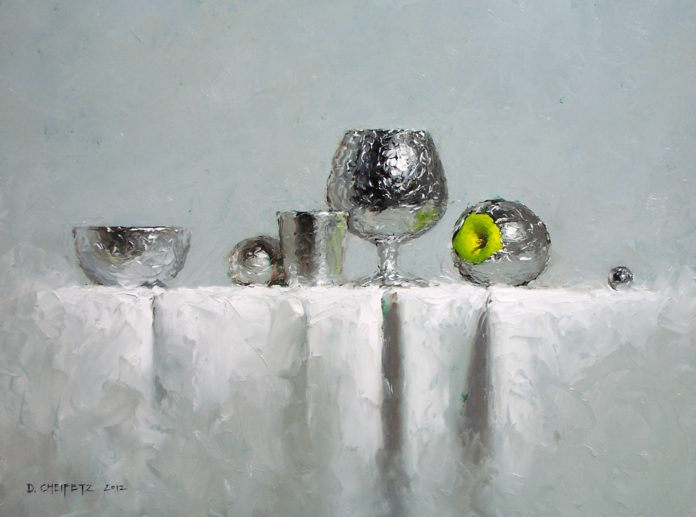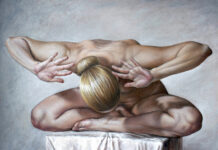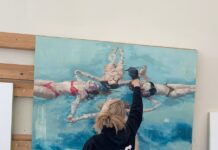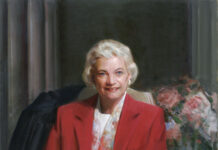“As with life and art in general, an approach filled with intent is at the heart of still life painting.”
All About Intent
By David Cheifetz
(davidcheifetz.com)
Still life is my favorite subject matter. The possibilities are endless and the logistics of painting from life are simple. I’m impatient and I want my creations to take shape quickly. When compared with other genres, still life seems well suited toward this end. My philosophy toward still life can be reduced to one word: Intent. As with life and art in general, an approach filled with intent is at the heart of still life painting.
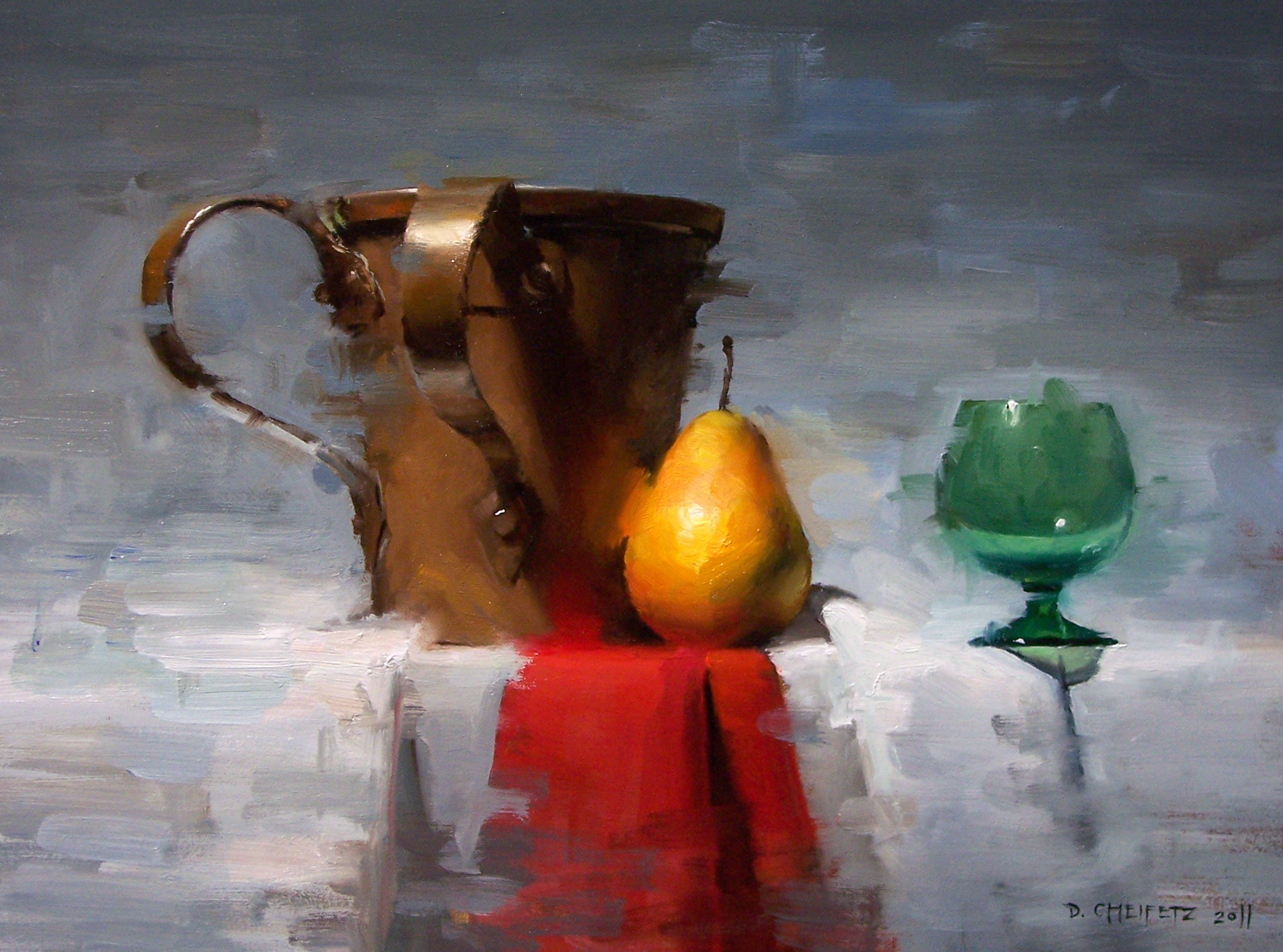
INTENTIONAL VISION: MENTAL CLARITY
In my experience, the level of success achieved by a still life painting correlates directly with the clarity of my vision for the finished painting before I even pick up a brush. All my failed paintings have had one thing in common: I didn’t have a clear vision. I jumped in (due to impatience or laziness or both) with the intent to figure it out on the fly.
Sometimes I get lucky; things work out and I’m able to save the painting. Most of the time, however, the result is a failed painting. You’d be better served spending three hours sitting in front of your subject and blank canvas, planning your still life in your mind, honing the mental image of it to crystalline clarity, rather than making a vague plan and painting with a three-hour head start, only to scrape it out after a day or two of wasted floundering.
The planning period is not the time to relax or multitask. It is the most important part of the process and much harder than painting. Sometimes I can’t even have music on during this stage. Planning is intensive mental work, not a license to procrastinate. Enter your painting with confident intent and mental clarity.
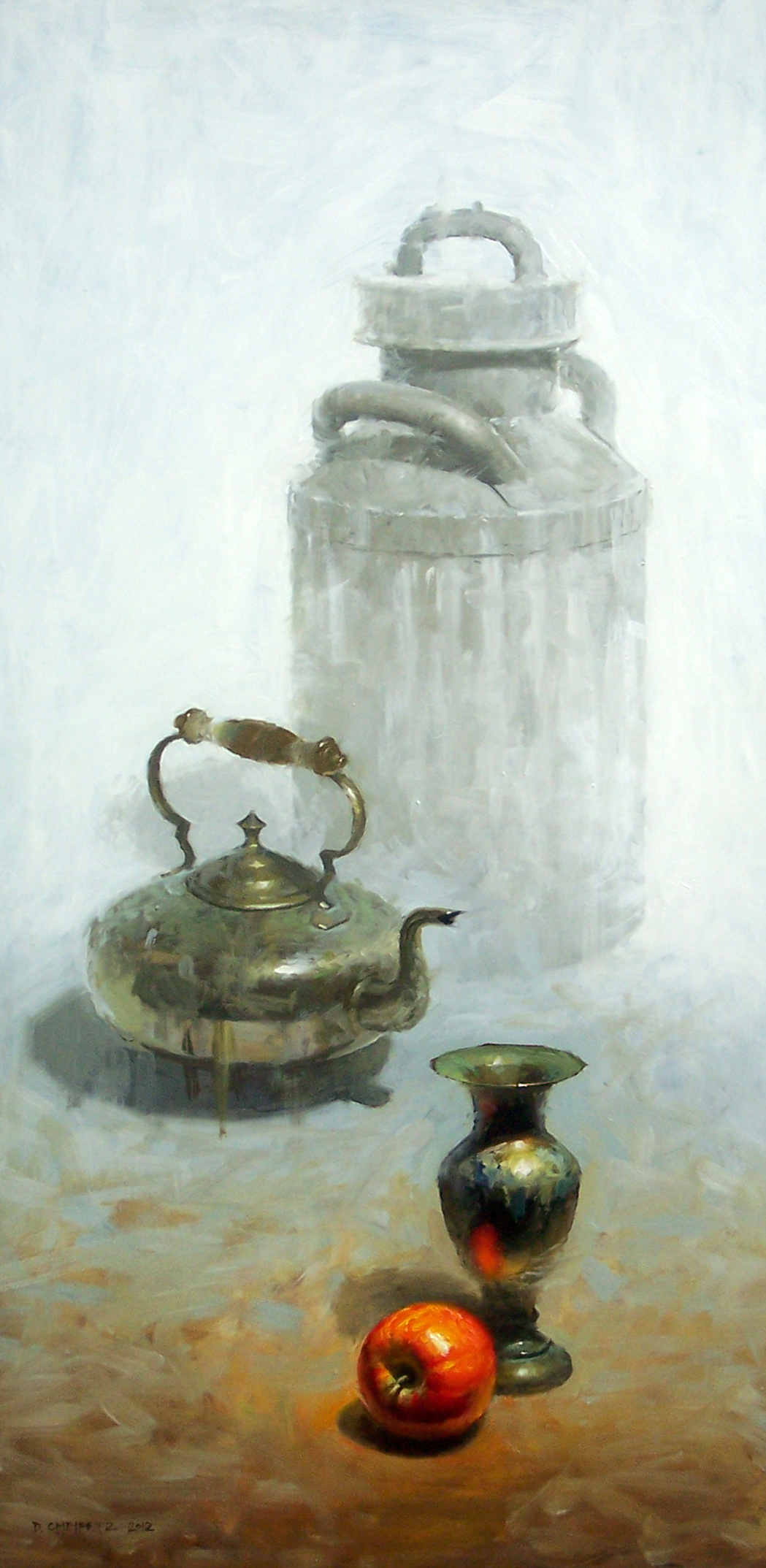
INTENTIONAL PURPOSE: MORE THAN JUST OBJECTS
Painting still life is the opportunity to create something extraordinary out of the ordinary. Without transcending the ordinary, a still life painting lacks purpose. A scene of objects strewn artfully on a table is nothing more than that. Without going through the unique and personalized filter of your mind, your painting will be limited to the value of the material realm, and won’t transcend it.
The success of your painting will hinge solely on the inherent qualities of your object(s) and you’ll be denying the viewer’s use of four other senses. A literal picture of a pretty flower would be hard pressed to compete with the real thing.
Literalism is especially problematic in the still life genre; much more so, I believe, than with portrait or landscape, where the primal connection we might have to a beautiful face or a fantastic scene from nature can sometimes compensate for a lack of artistic intent. Objects lying on a table are not interesting. The point is to find a way to make a beautiful painting, not just to skillfully recreate what you see. It’s not what you paint, but how you paint it. For this reason, the potential for still life is enormous—ranging from enormously boring to enormously awesome.
It is not enough to simply copy reality because reality often lacks focus. The literal painting has only one advantage: it makes a fleeting visual moment permanent. But we have modern tools better suited to that task, so painting literally, while taking tremendous skill, loses value. If instead you can fill your painting with a sense of focus to complement that technical proficiency, you can create something very powerful.
When it comes to still life, focus is everything. Focus gives still life purpose.
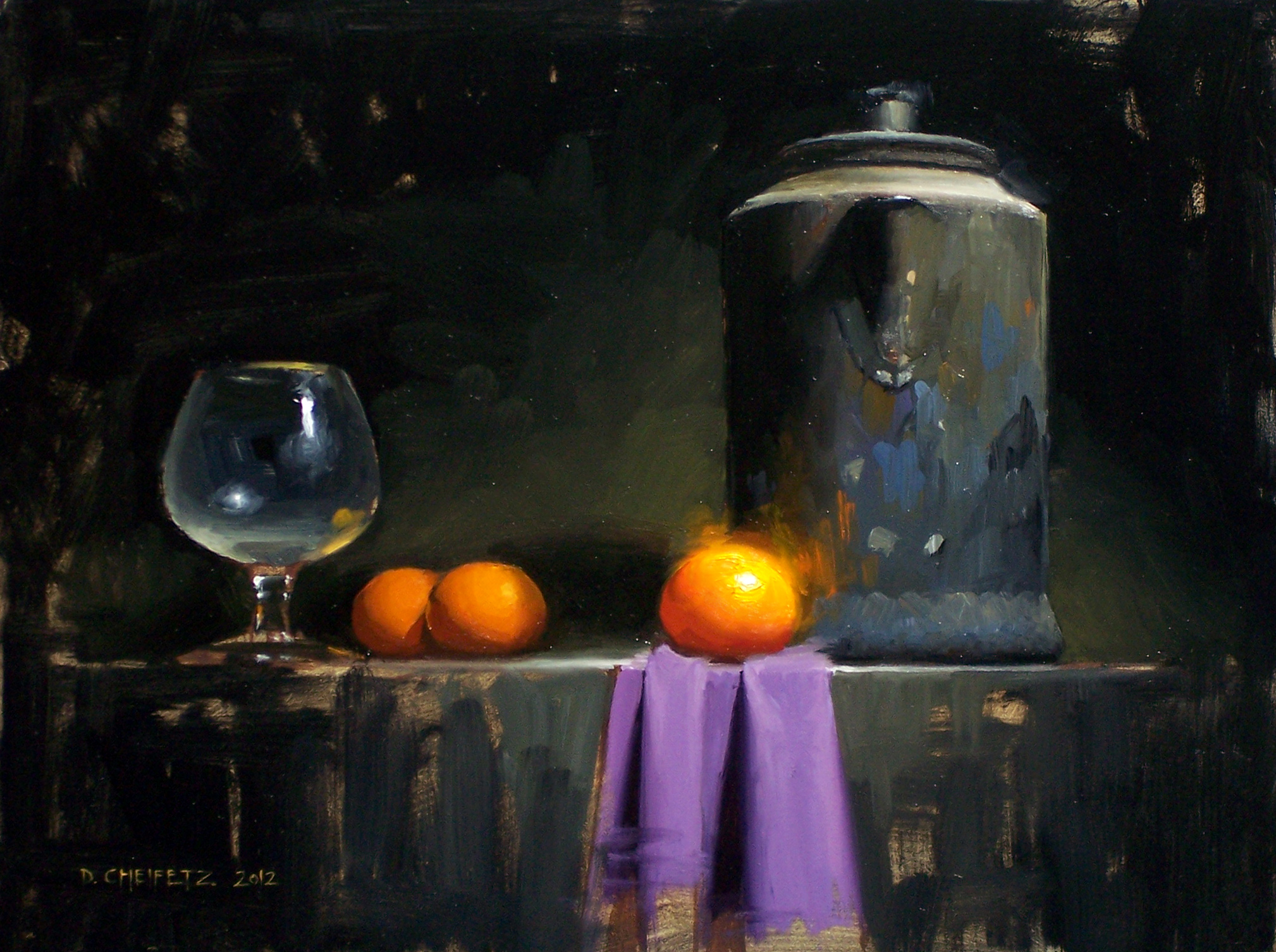
INTENTIONAL FOCUS: IT’S ALL RELATIVE
Take technical proficiency out of the equation for a moment. The following assumes accurate drawing—proportion and perspective, and effective turning of form.
I’ve come to believe that the success of a still life is directly proportional to the amount of focus in the painting. The viewer’s focus should be shaped intentionally by the artist. The eye of the viewer should be forcefully directed to a specific area before being allowed to wander. This can be very simple, with a singular focus, or it can be achieved in a hierarchy, with multiple focal points being visited by the eye in descending order.
You might even have intentionally conflicting focal points. The composition could be circular (the eye is lassoed in) or linear (a building progression leading to a climactic focal point). The possibilities are endless, but what’s important is the presence or absence of focus.
Everything is relative. Focus cannot be created in a vacuum or in isolation. You need subordinate elements to have a focus. Focus is created when something attracts the eye because it is more attractive relative to its surroundings.
To illustrate, a white spot will draw more focus on a black background than on a yellow background. The focus is always “the odd man out.”
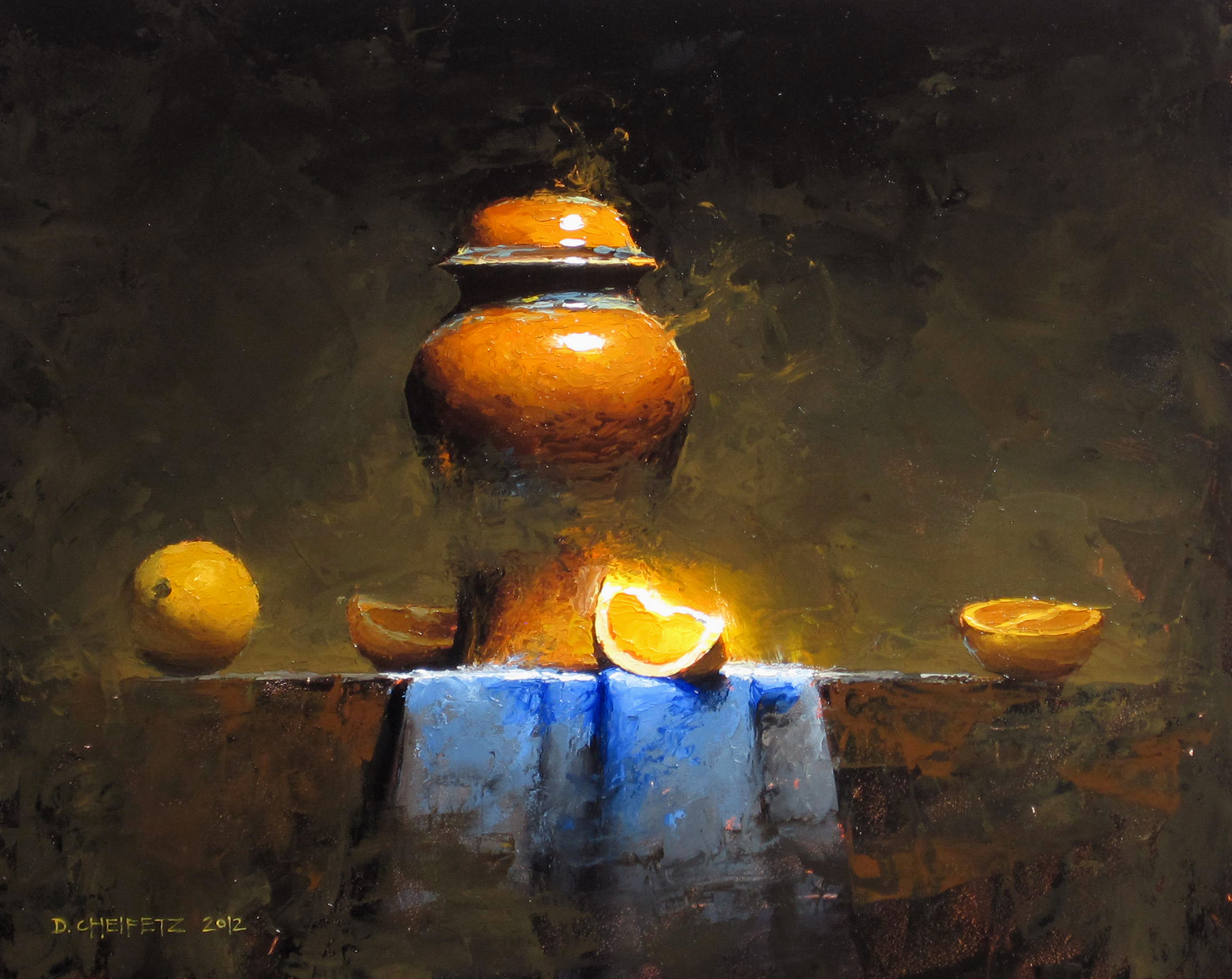
How to Create Focus in a Still Life Painting
The following are ways to create focus. I usually end up using several of these on each painting. If I could successfully use all of these simultaneously on a more consistent basis, my paintings would be much better.
Focus and Detail
Your focal point(s) or center of interest should be the most detailed aspect of the painting. Isolate detail to specific areas, be intentional about it; simplify everything else. The level of detail is relative. Your detailed spot is the odd man out. Everything else is less detailed. A painting that is uniformly tight is losing out on a powerful tool to create focus. Omit all detail unless you have a good reason for putting it in. Cut the fat. Paint less but with greater intent.
Focus and Size
The center of focus needs to be in correct proportion to the entire painting. If you want your apple to be the focus of your still life, but you paint it so large that it nearly fills the canvas, the apple is the painting. There is nothing relative to the apple that will make that apple special—you just have an apple.
There must be sufficient area in the painting that is subservient, more restful than the apple. The eye needs a break from your vibrant apple. Painting on a miniature canvas isn’t an excuse to throw the goal of focus out the window—something I’ve been guilty of in the past.
Focus and Edge
Edges might be my favorite tool for creating focus. The eye is attracted to sharp edges. Reserve your sharpest edges for where you want to create focus, with relatively less-sharp edges for everything else. As the edges become more lost and mysterious, objects recede from focus—literally becoming “out of focus.”
It is also possible to reverse this edge relationship. It’s not as simple as, “The eye is attracted to sharp edges.” That rule is comparatively weak compared to a more general rule that the eye is attracted to the odd man out. An object with lost or mysterious edges can be made the focus if everything else is painted in stark reality.
Focus and Value
If there’s one element that will make the most impact on focus from a distance, it’s value. Isolating the darkest darks and/or lightest lights to one area or object will create a sense of focus. The rest of the painting should have comparatively less value contrast (a tighter value range). If helpful, you can use the idea of aerial perspective to explain the hierarchy of value: things closer to you have greater value contrast and value range becomes smaller the more distant. A still life can be a landscape in miniature.
Focus and Color
A painting where every square inch is covered in brilliant colors isn’t a colorful painting. It’s a boring painting. Again, these elements are all relative. A bright red apple will look more vibrant when surrounded by relatively less saturated colors than it would on a bright orange canvas. If you keep your most intense color to one area, or in a hierarchy, you create a greater sense of focus.
If your color is the odd man out, it will be special. In this way, a painting with very little color can feel “colorful.” As with value, you can also think in terms of aerial perspective when it comes to color. Things closer to you may have more saturated colors and things farther away become grayer because of the layers of atmosphere between you and distance objects.
Maybe all of this breakdown can be simplified. If there’s one thing to remember, it’s that your focal point is “the odd man out.”
Related Article:
Visit EricRhoads.com (Publisher of Realism Today) to learn about opportunities for artists and art collectors, including: Art Retreats – International Art Trips – Art Conventions – Art Workshops (in person and online, including Realism Live) – And More!


